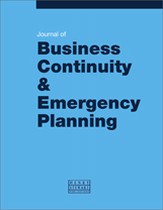Tips for managing a remote workforce
Abstract
With the initial disruption of COVID-19 now settling down, organisations are finding themselves in a new situation, where some of their previously onsite workforce is now fully remote or working according to a hybrid model of onsite and remote work, and some new employees have been hired as fully remote. This new model of dispersed employees presents managers, supervisors and leaders with fresh challenges when it comes to checking in on employees and providing them with the guidance, they need to perform their daily functions. This paper supplies key tips for the successful management of remote workforces. As well as how to balance the team dynamic with employees in multiple locations and differing work types, such as, fully remote, hybrid and onsite, the paper will also explore the use of various technologies and methods for ensuring employees are working to the best of their ability and continue to be content and productive in whatever environment they find themselves working.
The full article is available to subscribers to the journal.
Author's Biography
Cary Jasgur is the First Vice President, Enterprise Resilience for Amalgamated Bank. He has over 30 years of experience in various areas of resilience and recovery, having managed responses to disaster events both within the USA and globally, including the H1N1 pandemic, Super Storm Sandy, and the COVID-19 pandemic. He is a regular speaker at organisational resilience conferences. He holds a Bachelor of Science degree in technical management and dual Master of Science degrees in organisational leadership and project leadership and management. He is also a certified Master Business Continuity Professional, Fellow of the Business Continuity Institute, and Project Management Professional.
Citation
Jasgur, Cary (2023, June 1). Tips for managing a remote workforce. In the Journal of Business Continuity & Emergency Planning, Volume 16, Issue 4. https://doi.org/10.69554/EFAF4549.Publications LLP
